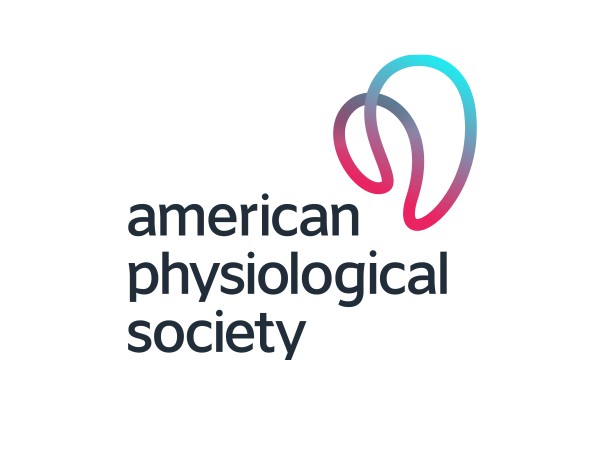Anatomy-Physiology
The study of the structure and function of living organisms' bodies and their parts.
Members of the American Physiological Society Center for Physiology Education have worked with CourseSource to create a Learning Framework for the Anatomy-Physiology course. The table below lists the learning goals and objectives that are derived from the core concepts of physiology developed and revised by Michael and McFarland, 2020.
The following people worked to develop this society-approved Anatomy-Physiology Learning Framework:
Justin Shaffer (Colorado School of Mines), Casey Self (University of Washington), Dax Ovid (University of Georgia), and Aylin Marz (Norfolk State University).
Download the Anatomy-Physiology Learning Framework
American Physiological Society
Founded in 1887, the American Physiological Society is a global leader in expanding knowledge related to biological function. We connect a multidisciplinary community of nearly 10,000 scientists and educators from around the world, driving collaboration and spotlighting scientific discoveries in physiology and related disciplines. Our members are advancing treatments and cures for everything from cancer and heart disease, to obesity and addiction. They are also deepening our insight into living organisms generally, helping us to better understand how things like climate change are affecting the world around us.
Course Editor(s):
Anatomy-Physiology Learning Framework
Society Learning Goals
Articles
Cell-Cell Communication
How do cells send and receive signals from each other to coordinate cell, tissue, organ and system physiology?
Sample Learning Objectives- Compare and contrast steroid hormones and water-soluble hormones for their generation, transport, and mechanism of action on target cells
- Draw different feedback mechanisms that regulate endocrine signaling to maintain homeostasis
- Describe the different mechanisms by which neural cells transmit electrical signals to other cells influencing their physiology
- Predict the outcomes on cell, tissue and organ physiology of interrupting cell-cell communication mechanisms
Cell Membrane
How do cell membranes support transport and communication between intracellular and extracellular environments?
Sample Learning Objectives- Identify cell membrane components and describe how their structures relate to their functions with regard to communication and transport
- Describe how the structure of the cell membrane establishes resting membrane potential and apply the Nernst equation to determine membrane potential given intracellular and extracellular concentrations of certain ions
- Identify extracellular compartments between cells within the same tissue, organ, system and across different body systems
- Explain how alterations in membrane potential result in changes in physiology in excitable tissues containing neural cells and muscles as well as in non-excitable tissues
- Predict how changes in cell membrane structure and cell surface receptor composition result in physiological changes and possible cellular disorders
Cell Theory
How do cells produce other cells via different mechanisms to generate tissues, organs, and systems that maintain physiological function within an organism and ensuring generation of its progeny?
Sample Learning Objectives- Describe how cell theory relates to cell division and organismal growth
- Compare and contrast the processes and locations of mitotic and meiotic cell division
- Predict the effects on the physiology of cells, tissues, organs and systems of an abnormal event that occurs during the mitotic or meiotic cell division cycle
- Explain the theories of tissue regeneration using adult stem cells that differentiate, replenish themselves, and age
- Distinguish the effects of cell division, differentiation, aging, and death on the establishment and maintenance of physiological function within tissues, organs, and systems
Energy
How do organisms acquire, transform, and transport energy?
Sample Learning Objectives- Explain why cells and organisms require energy
- Explain how ATP hydrolysis and ion gradients provide energy to power cellular processes
- Trace the path of energy transformation from the intake of food to the production of ATP in the cell
- Predict what may occur to cellular and organismal function if energy availability is disrupted
Evolution
How does evolutionary history explain the relationship between biological structure and physiological function?
Sample Learning Objectives- Explain how variation, inheritance, and selection drive the evolution of anatomical structures and physiological functions
- Explain how anatomical form and function relationships and physiological systems exist as evolutionary trade-offs
- Describe two or more physical traits that multiple organisms share and how differences in structure can shape physiological function in relation to each organism’s environment
Flow Down Gradients (Flux)
How do ions, molecules, fluids, and gases flow down gradients?
Sample Learning Objectives- Compare and contrast pressure, chemical, electrical, and electrochemical gradients
- Explain the physiological impacts of molecules, ions, fluids, or gases flowing down gradients
- Explain the roles that gradients and resistance to flow contribute to the flow or flux of molecules, ions, fluids, and gases
- Predict the direction of flow of an ion, molecule, fluid, or gas given a gradient
- Predict how changes in resistance affect flow down gradients of ions, molecules, fluids, and gases
Genes to Proteins
How does transcription of DNA to RNA and protein translation contribute to the structural anatomical and physiological function of an organism?
Sample Learning Objectives- Explain how RNA is transcribed from DNA and how protein is translated from RNA
- Explain the different mechanisms by which gene expression is regulated
- Compare and contrast epigenetic and genetic mechanisms that transmit anatomical and physiological information during cellular division and organismal reproduction
- Predict how alterations in gene expression may affect anatomical and physiological traits of an organism
Homeostasis
How does the internal environment of the organism maintain homeostasis via negative feedback systems?
Sample Learning Objectives- Give examples of negative feedback from each body system and how it works at the levels of cells, tissues, and/or organs.
- Describe how perturbations to homeostasis are detected by sensors in the body and acted upon in an attempt to restore homeostasis
- Draw and label a negative feedback system for a single body system and for integration across multiple body systems
Levels of Organization
What biological organizational levels exist in an organism and why is this important?
Sample Learning Objectives- Describe the different levels of biological organization
- Describe the relationship between anatomy and physiology and how they influence each other in different levels of organization
- Compare and contrast the organizational levels of different organ systems in animals and plants
- Describe and analyze examples of emergent properties that arise at each level of organization
- Evaluate and critique the limitations of reductionism in biology and the need for a holistic approach that considers multiple levels of organization from molecular to societal in problem solving
Mass Balance
How do mass balances (in and out) affect biological systems?
Sample Learning Objectives- Build a model to describe the ways that mass can enter or exit a physiological system
- Explain the factors that contribute to the amount of mass changing within a physiological system
- Construct a mass balance on a physiological system and determine if there is net mass moving in to or out of the system
Physical Properties of Matter
How do physical properties of matter contribute to living organisms?
Sample Learning Objectives- Describe the types of matter that are found in physiological systems
- Explain how basic laws of chemistry and physics to apply to physiological systems
- Predict how a physiological system may change given perturbations depending on the laws of chemistry and physics
Scientific Reasoning
How have experimental designs in physiology informed our understanding of physiological concepts?
Sample Learning Objectives- Explain how scientific reasoning is applied to the study of anatomy and physiology
- Give an example of an experiment that led to a key discovery in physiology, including the study methods, results, and interpretations
- Describe multiple experimental methods to measure shifts in physiological phenomena in a given system, as well as the limitations of these methods.
- Design an experiment to investigate the impact of structural or environmental changes on the function of an organism
Structure and Function
How does the structure of any part of the organism, from the cellular to organism level, contribute to the function of the organism?
Sample Learning Objectives- Describe the structural similarities found across systems and taxa that support a similar function
- Given a specific physiological system, describe the structural adaptations that contribute to the system’s function
- Predict how changes in environmental or pathological conditions can affect the structure and functional of biological systems
- Given a pathological scenario, predict how the changes in structure impact the function of the relevant physiological system
- Distinguish between normal variation that supports function and structural variations associated with pathology
Systems Integration
How do systems interact and communicate with one another to maintain the organism's overall balance?
Sample Learning Objectives- Describe specific examples of physiological systems integration in action
- Predict how changes in one system may impact the function of others
- Create models of the connections between different anatomical and physiological systems

